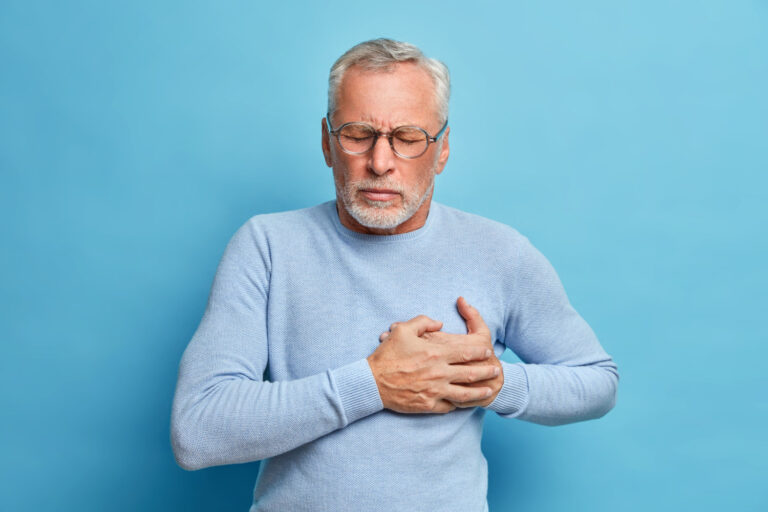Angina pectoris

Angina pectoris, commonly referred to as angina, manifests as discomfort or pain in the chest when the heart is deprived of sufficient blood and oxygen. This sensation may resemble a burdensome weight on the chest or manifest as a squeezing, pressurized, heavy, or tight feeling.
What’s angina Pectoris or angina pain?
In a simple phrase, we are able to say that while there may be increased oxygen demand in the body and decreased oxygen deliver.
The factor to be noted here that, why this circumstance arises in our frame.
The answer to this question is the etiology of the sickness or causes
Ischemic heart circumstance, Atherosclerosis, and vascular delivery decrease due to fixed obstruction, vascular spasm, and anemic condition where RBC unable to hold sufficient oxygen to coronary heart.
Signs and symptoms of angina :
1. Intense ache in the chest, people may sense pressure on the chest,
2. A few characters might also experience indigestion issues
3. Pain spread from the patient’s neck side to jaw, arm, and lower back
4. Burning sensation in the chest especially found in women
Different forms of angina
||
______________________________________________________________________________________________________________________________________________________
| | | |
1) Stable/Classical/ 2) Unstable angina 3) Variant/Prinznetal/vasospastic angina 4)Microvascular
exertional angina
- Stable angina/classical angina/exertional angina: Pain is precipitated by way of workout or emotion, both of which elevate myocardial oxygen consumption (even a heavy meal can precipitate angina). In such sufferers, there is a narrowing of the coronary arteries due to atherosclerosis, and, consequently, the coronaries can not dilate to grow the blood supply all through exercise. As a result, there’s an imbalance between oxygen delivery and demand. It can be relieved by sleep.
Causes includes: coronary artery (artery that supply oxygenated blood to the heart) get narrow. Atherosclerosis is one of the reasons. When person experienced emotional stress, during exercise/ workout
There is reduced oxygen, nutrition rich blood supply to the heart and so angina symptoms appear.
2. Unstable angina: This is a serious form of angina. It exists when there is an elevation in the demand for oxygen by myocardial cells. It gets worse during sleep. This is an emergency condition and needs quick hospitalization. There is clot formation by the platelet. In the future unstable angina patients may suffer from heart attacks.
3. Variant/ Prinznetal/ Vasospatic angina: There is no fixed timing for the occurrence of this angina. It can precipitate at any time. There is no specific etiology behind this type of angina, atherosclerosis may or may not be the cause. The ischemic heart disease may arise due to vasospasm of the coronary artery. It occurs due to smoking tobacco, cocaine administration, emotional outbursts, and excess stress.
4. Microvascular angina: As the name indicates the disease origin lies within tiny branches of the coronary artery. This is more preferentially occurs in women. This type of angina is also known as “cardiac Syndrome X”
Medication that used to treat angina are called as "anti-anginal drugs"
- Beta blocker
- Calcium channel blockers
- Organic nitrates
- Antiplatelets
Ex.,
Propranolol, atenolol,
Ex.,
Verapamil,
diltiazem, amlodipine
Ex.,
Nitroglycerin, isosorbide dinitrate,
isosorbide mononitrate
Ex.,
Aspirin, clopidogrel
Nitrate Action
Vasodilators include nitrates. The enzymes aldehyde reductase and mitochondrial glutathione-S-transferase convert them to nitric oxide. Vascular guanylyl cyclase is activated by NO, leading to an increase in cGMP production. This cGMP causes protein kinases to become dephosphorylated, which stops actin and myosin from interacting. By enhancing Ca++ efflux or inhibiting calcium release from the sarcoplasmic reticulum, it also lowers free cytosolic calcium. Vascular smooth muscles as well as other smooth muscles relax as a result of these effects. Thus, it results in the relaxation of other smooth muscles as well as vasodilation.
Absorb orally, First pass effect
Isosorbide mononitrate shows 100% bioavailability and long dusration of action.
Adverse effect: Headache is common; flushing, sweating, palpitation, weakness, postural hypotension
Uses: it is used in Exertional angina, Vasospastic angina, Unstable angina and in case heart attack
